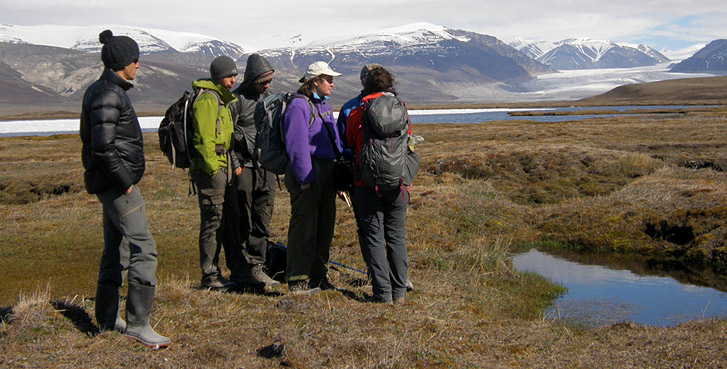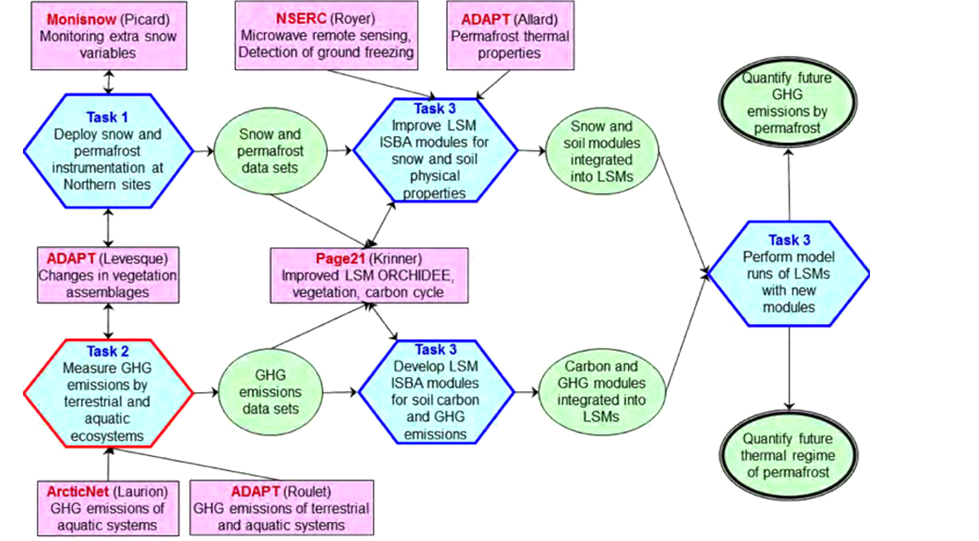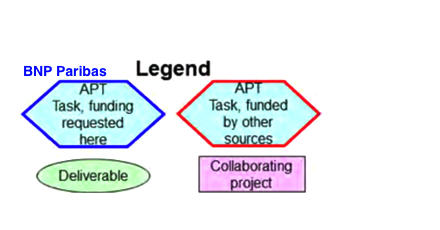Synergies
and collaboration
Our ambitious tasks will benefit from existing collaborations and from activities already funded and under way. The ADAPT project, funded by the Canadian NSERC, supports several of our Canadian partners and is devoted to permafrost, but its main focus is on water motion while APT is mostly devoted to snow-vegetation interactions, energy budget and OM fate. Other funding sources include ANR (G. Picard) and Arcticnet (I. Laurion). The involvement and funding status of each partner in the project is listed in the Table below.

-
Florent Domine
Build and deploy snow and permafrost thermal instruments in taiga.
Perform field work at 3 subarctic and arctic sites, analyze data.
IPEV + NSERC -
Ghislain Picard
Deploy snow optical instruments.
Foundation BNP Parisbas
ANR Monisnow -
Samuel Morin
Improve snow physics model crocus.
Foundation BNP Parisbas
ANR Monisnow -
Bertrand Decharme
Improve LSM ISBA
Perform model runs to predict permafrost thermal regime and OM fate
Foundation BNP Parisbas -
Esther Levesque
Investigate vegetation assemblages, as related to snow properties.
ADAPT -
Michel Allard
Soil physical properties, OM in soil.
ADAPT -
Nigel Roulet
Measure GHG emissions by wetlands.
ADAPT -
Gerhard Krinner
Improve LSM ORCHIDEE
Page 21 -
Alain Royer
Microwave remote sensing of soil freezing, including the use of the SMAP satellite.
NSERC -
Isabelle Laurion
Measure GHG emissions by aquatic systems.
ARTICNET

The synergies between the
various projects are detailed
in the diagram below.


The main deliverables will be: (a) a well-organized data set that will be made available to modelers, including those in sister projects; (b) an improved understanding of physical and biological processes and of their interactions, leading to parameterizations usable in models; (c) improved and well validated land surface modules for snow properties, soil thermal properties, permafrost thermal regime and GHG emissions; (d) Model outputs on permafrost thermal regime, allowing predictions of thawing, and on GHG emissions, which can be included in future climate scenarios.
